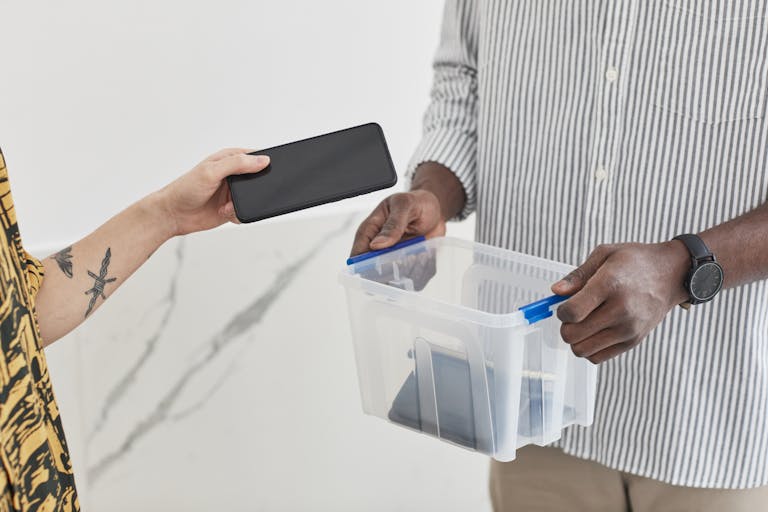We’re scrolling more, buying more, watching more—and feeling less satisfied. Welcome to the digital age of overconsumption, where the line between “need” and “impulse” has been digitally blurred.
From infinite scrolls to one-click purchases, today’s platforms are built not just for convenience, but for compulsion. Let’s explore the psychology behind this phenomenon and how to reclaim your autonomy in a world built for binging.

1. The Dopamine Loop: Your Brain on Overdrive
Every notification, like, or purchase triggers a small release of dopamine—a neurotransmitter linked to pleasure and reward. This makes us associate digital interactions with momentary highs.
Key Insight:
- Dopamine doesn’t give you pleasure; it creates anticipation.
- Platforms exploit this by providing variable rewards—you don’t know when the next “hit” will come.
This is the same psychological mechanic used in slot machines.
2. Infinite Scroll and Endless Feeds
Unlike books or even TV shows, many digital platforms have no “end.” Think of social media timelines, YouTube autoplay, or TikTok’s algorithm.
Why It Works:
- Your brain seeks closure, but infinite design withholds it.
- You keep scrolling, hoping to find something satisfying—just one more post, video, or deal.
This fuels both time-wasting and impulse behavior like unnecessary purchases or binge content consumption.
3. Personalized Algorithms and Emotional Targeting
Algorithms now know your preferences better than some of your friends do. They don’t just show you what’s trending—they feed your emotional triggers.
Examples:
- Ads during vulnerable moments (late at night, after a breakup)
- Shopping platforms showing products “you might also like”
- Social content that fuels comparison or fear of missing out
This makes overconsumption not just probable, but psychologically inevitable—unless you’re aware of it.
4. Digital Shopping and the Illusion of Frictionless Choice
Online shopping removes natural friction: no driving, no lines, no physical limitation. And with one-click checkouts, you’re not spending money—you’re tapping buttons.
Psychological Triggers:
- Instant gratification
- Limited-time offers and countdowns
- Free shipping thresholds
The result? More buying, less evaluating.
5. The Normalization of Constant Stimulation
In the past, boredom sparked creativity. Today, we avoid it at all costs—with apps, games, and short-form videos filling every spare moment.
Why That’s a Problem:
- Constant stimulation dulls your baseline pleasure
- You require more input to feel the same satisfaction
- This leads to emotional numbing and compulsive consumption
You’re not just consuming content—you’re numbing discomfort.
6. Overconsumption’s Hidden Cost: Decision Fatigue and Anxiety
The more you consume, the more decisions you make—what to watch, what to buy, how to respond. This leads to decision fatigue, anxiety, and even guilt.
Warning Signs:
- You forget why you even opened your phone
- You feel drained after “just scrolling”
- Your spending feels impulsive, not intentional
These are signs you’ve entered a digital consumption trap.
How to Reclaim Control
You can’t fully escape the digital world, but you can build conscious habits to fight overconsumption:
Practical Strategies:
- Set “off-hours” for your devices
- Use website blockers or grayscale mode to reduce stimuli
- Delay purchases by 24 hours
- Practice digital minimalism—delete apps that don’t serve a purpose
- Track your screen time and spending triggers
Q: Is digital overconsumption the same as addiction?
A: Not exactly. Overconsumption is compulsive behavior triggered by design. Addiction is a clinical condition, but they share behavioral overlaps.
Q: Can limiting screen time really help reduce overconsumption?
A: Yes. Reducing screen time removes exposure to targeted triggers and frees mental space for reflection and intentional behavior.
You don’t need to quit digital life—but you do need to stop letting it dictate yours. Awareness is your first tool. Intention is your second. Use both to consume wisely, not compulsively.

I’m EKBAL HOSSAIN MONDAL, the creator of SmartSolveTips.com — a blog dedicated to helping people improve productivity, avoid digital burnout, and live better online. With years of hands-on experience in self-development and digital wellness, I write practical tips and tools to help you stay focused and thrive in a fast-paced digital world.






